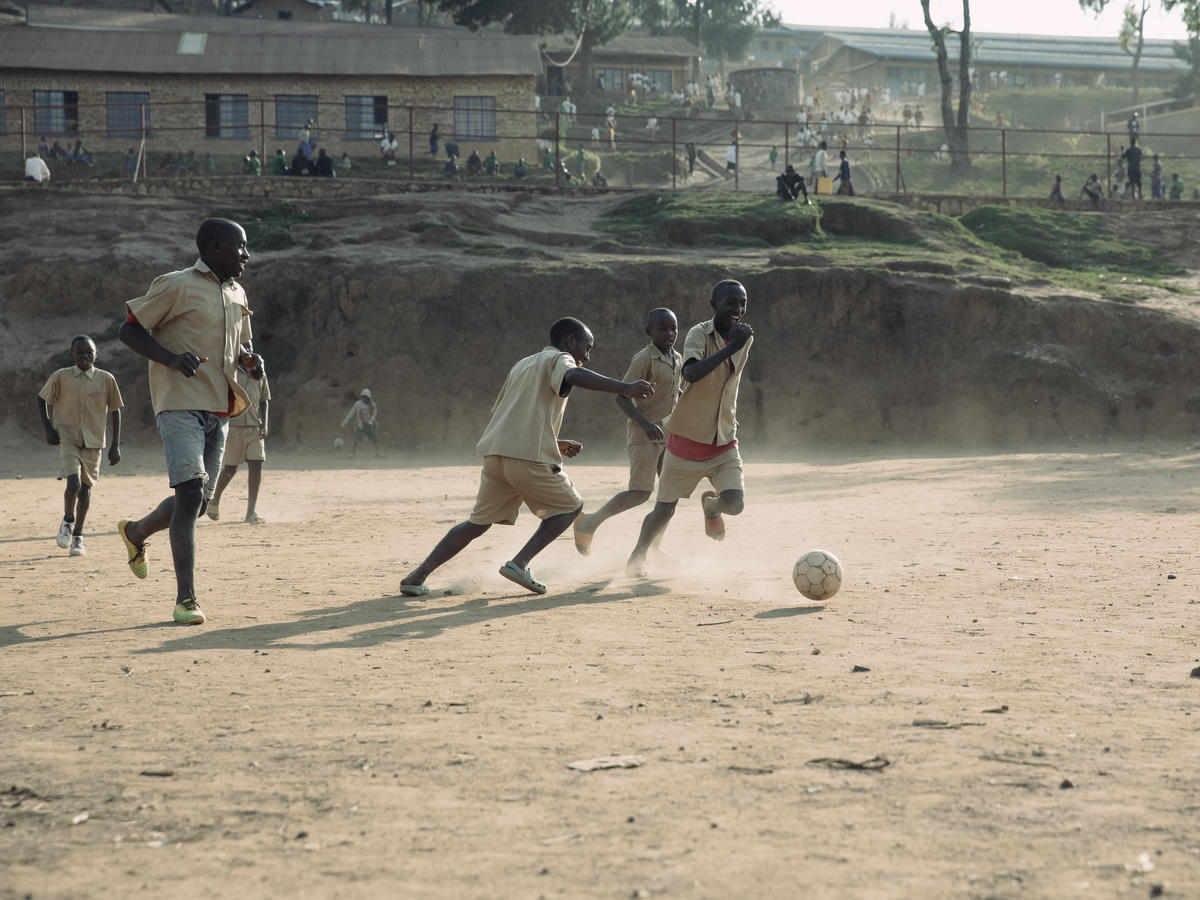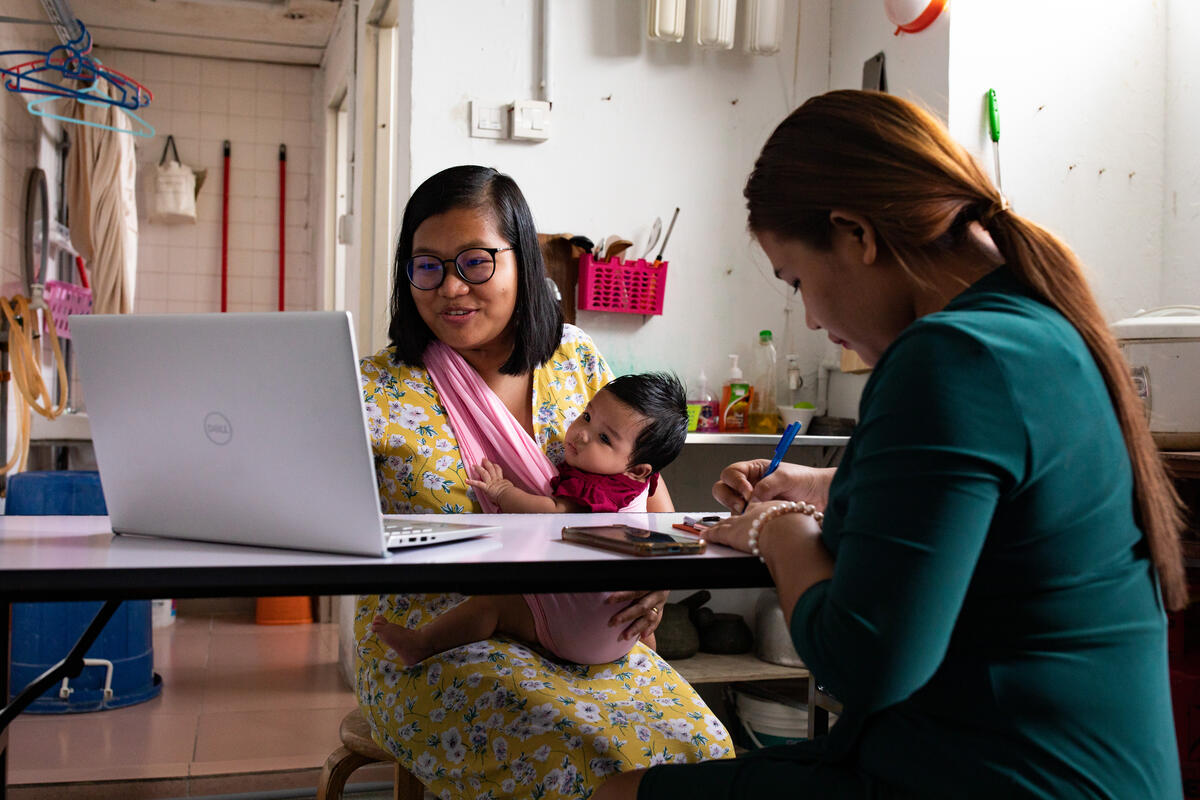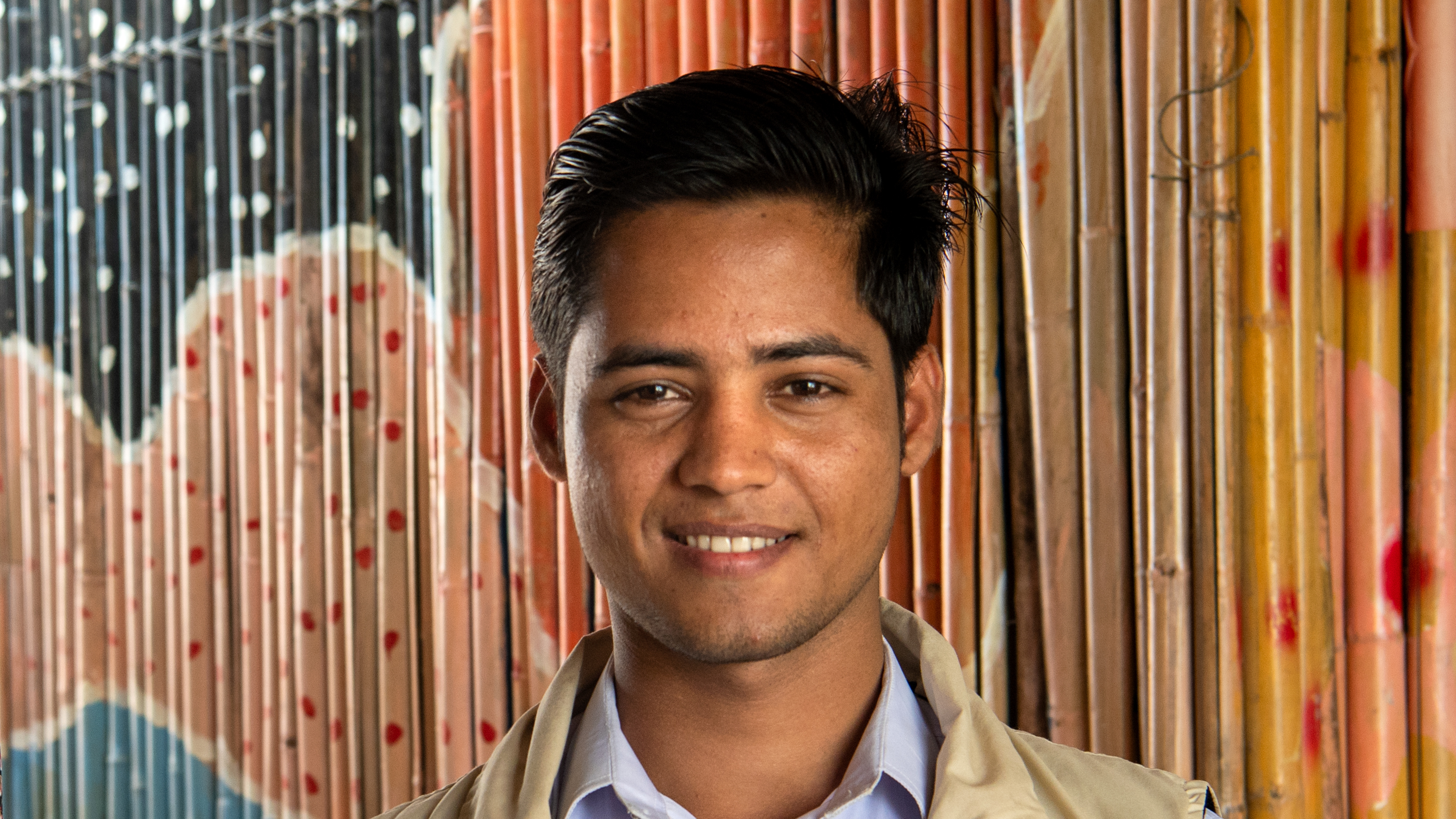UNHCR addresses "alarming" level of child mortality in Ethiopian camp
UNHCR addresses "alarming" level of child mortality in Ethiopian camp

DOLLO ADO, Ethiopia, August 16 (UNHCR) - The UN refugee agency said Tuesday that child mortality rates at a camp for Somali refugees in eastern Ethiopia have reached "alarming" levels, with an average of 10 children under the age of five dying every day since the facility opened in June.
Acute malnutrition is thought to be the major cause of the child deaths at the Kobe refugee camp, which was opened to help cope with an influx of tens of thousands of Somalis crossing to the Dollo Ado area to escape drought, famine and fighting in their country.
An outbreak of suspected measles has compounded the problem and is thought to have caused some deaths. In Kobe and the three other camps in the Dollo Ado area, "We have seen 150 cases of suspected measles and 11 related deaths," said UNHCR spokesman Adrian Edwards. "The combination of disease and malnutrition is what has caused similar death rates in previous famine crises in the region," he added.
Christopher Haskew, a UNHCR medical officer in Dollo Ado, said a priority for UNHCR was to take action to prevent people dying as a result of the outbreak. He noted that measles is highly contagious and can have a devastating impact on children, especially those who are malnourished.
Edwards said UNHCR was "urgently working with partners to respond to the emergency and control the measles outbreak," adding that a mass vaccination campaign against measles was completed in Kobe on Monday. This targeted all children between the ages of six months and 15 years. It will continue in the other camps in the coming days.
A key priority for all partners working in the camps is to promote awareness of the health and nutrition programmes available for refugees. "There is a need to encourage parents to return with their children to health centres for continued treatment for malnutrition, and to actively identify children who are sick to ensure they receive immediate medical attention," Edwards said.
UNHCR is also working with refugee leaders and outreach workers to raise awareness of measles symptoms and hygiene promotion. Together with the Ethiopian government and other partners, UNHCR is addressing other, underlying causes of the high mortality rate by improving nutrition, water supply and sanitation, amongst others.
Elsewhere in Ethiopia, some 17,500 Somalis have crossed into the Gode and Afder areas over the last six weeks, according to a joint field mission led by UNHCR and the government. These are totally new entry points some 250 kilometres north-east of Dollo Ado, which has been the primary destination in Ethiopia for Somalis.
Most new arrivals originated from the Bakool and Bay regions, with others coming from the Gedo and Hiran areas. They are staying in makeshift shelters in five different locations.
Preliminary assessments showed that an estimated 95 per cent were women and children, with the majority in a very poor condition. "UNHCR and the Ethiopian government have decided to immediately provide a one-month food ration to the new arrivals," spokesman Edwards said.
The mission voiced concern that a lack of shelter and health care, poor sanitation and overcrowding could lead to opportunistic diseases such as acute diarrhoea, measles and whooping cough. The team recommended the urgency of rushing essential drugs to the area.
Discussions are under way to relocate the group to camps in Dollo Ado. However, the new arrivals are weak and might need some time to stabilize and gather enough energy to be able to relocate.
In Somalia, meanwhile, the last of three chartered flights of UNHCR aid landed in the Somali capital of Mogadishu on Saturday, completing the consignment of some 100 metric tonnes of emergency assistance.
The same day, UNHCR distributed about 500 emergency assistance packages in the city's Al Adala camp sheltering some 13,000 people. Further distributions of aid are planned for Al Adala and other sites throughout Mogadishu before the end of the month.
Before the current crisis, the Somali capital hosted some 370,000 internally displaced people. An additional 100,000 flocked to Mogadishu during June and July, seeking food, water, shelter and medical help. Many ended up in Al Adala, where conditions are dire, according to UNHCR staff.
Small makeshift shelters with no sleeping mats or bedding are characteristic of the congested settlement. A number of children were lying helplessly on the ground, suffering from measles, which is apparently affecting many in the settlement.
In Kenya, UNHCR teams continue with their emergency work of increasing the capacity of the Ifo Extension (comprising what was previously known as Ifo2 and Ifo3 site) and Kambioos camp of the Dadaab refugee complex. The movement of refugees to the Kambioos site, initially scheduled for this past weekend, has been delayed and is now expected later this week. Some 600 tents have been pitched there so far. Movements to the Ifo 3 area of the Ifo Extension are continuing.
Since July 28, more than 15,000 Somali refugees have been moved to the new tents in this location. The Dadaab camps are now sheltering more than 440,000 Somali refugees.









